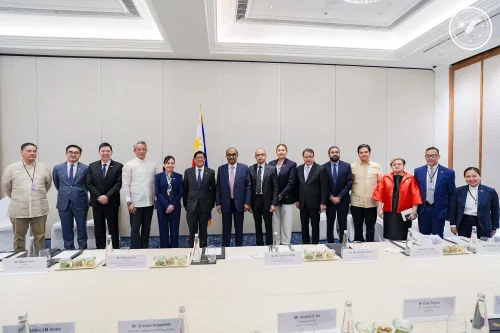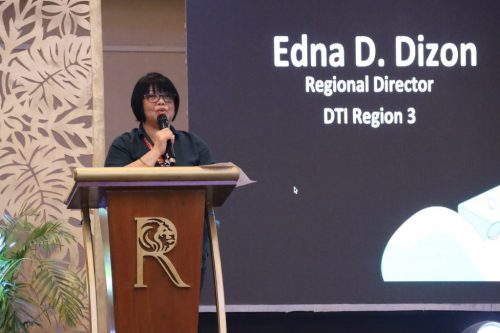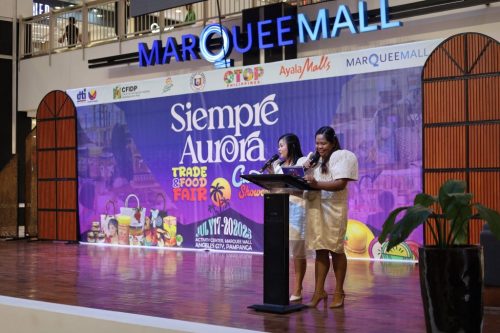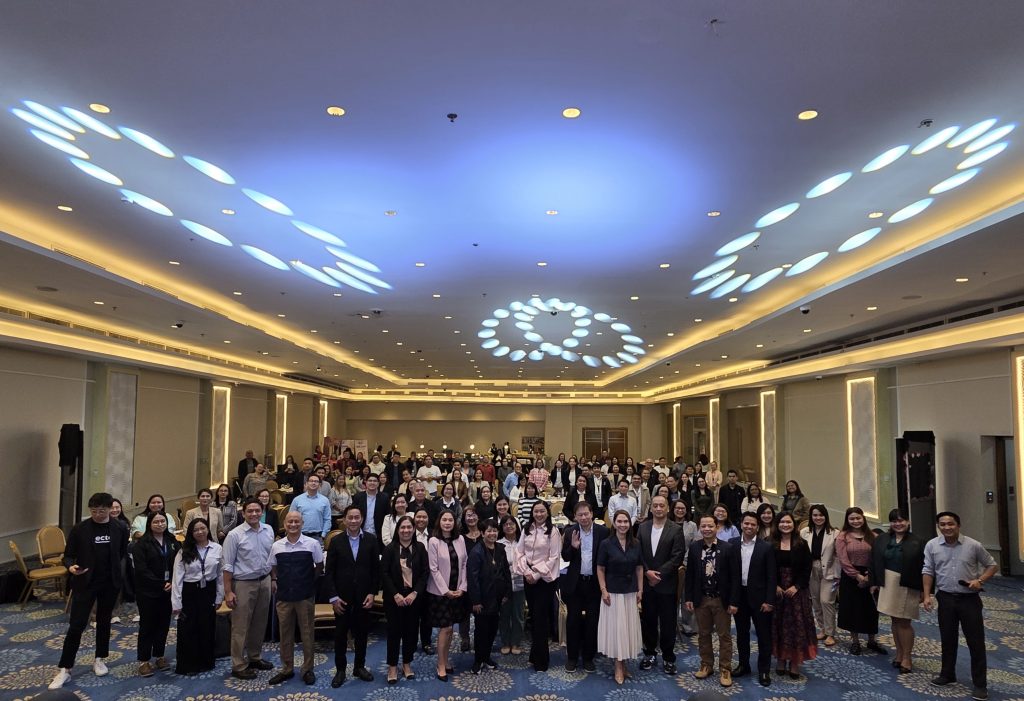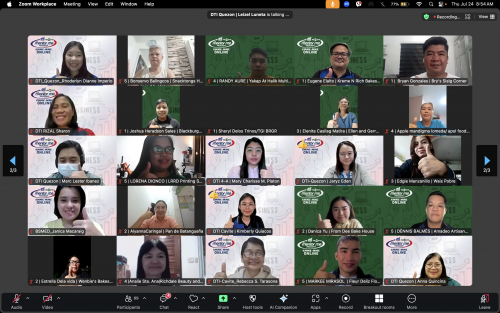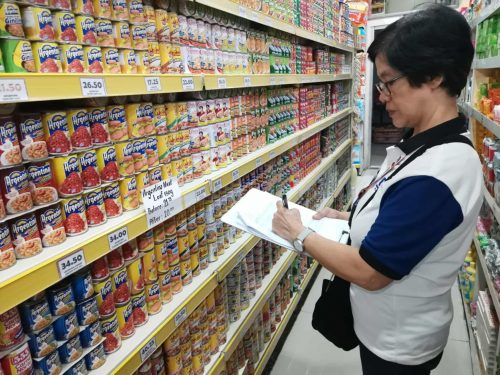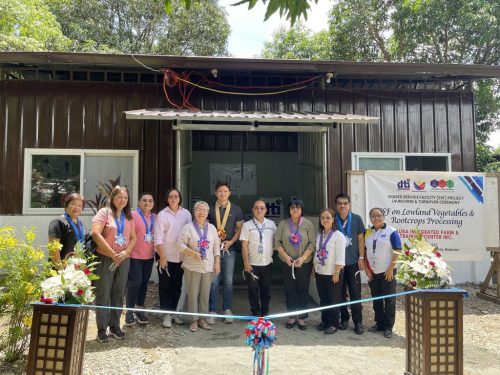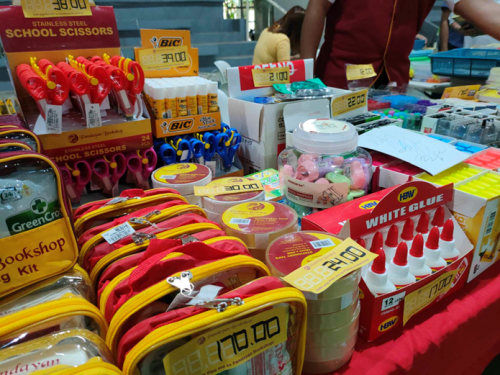[su_tabs][su_tab title=”About”]
DTI-03 or DTI-Central Luzon is composed of seven provinces—Aurora, Bataan, Bulacan, Nueva Ecija, Pampanga, Tarlac, and Zambales; and fourteen cities: Angeles, Balanga, Cabanatuan, Malolos, San Fernando, Gapan, Mabalacat, Meycauyan, Olongapo, Palayan, San Jose, San Jose del Monte, and Munoz, and Tarlac.
The region earned itself the moniker “Rice Granary of the Philippines”, since it has the largest plain in the country and produces most of the country’s rice supply. It is also host to the country’s premier economic zones (ecozones)—Clark and Subic Freeport Zone and other industrial estates that generate jobs and foreign exchange for the country.
[/su_tab][su_tab title=”News”]
[/su_tab][su_tab title=”Regional Profile”]
Central Luzon at a Glance
Envisioned to become the industrial heartland of the Philippines and the Asia Pacific; an international transshipment hub; and a showcase of a vibrant and competitive agriculture sector, Central Luzon is the logical destination for investments and leisure.
A growth region in the Philippines that contributes significantly to the national economy, Central Luzon is home to a number of industrial estates and economic zones with efficient water, power and telecommunication facilities; port facilities; road networks that create synergy between and among the economic and tourism points of Subic, Clark and the seven provinces; and, a strategic location that offers accessibility for the movement of people, goods and service from the North to Manila.
A distinct advantage in consideration of the Asia-Pacific Rim, Central Luzon’s highly strategic location was enough for the United States Government to locate their biggest naval and air military facilities outside the US mainland. The former Subic Naval Base and Clark Air Base facilities which were turned over to the Philippine government in 1991, now two of the country’s premier economic zones.
Central Luzon combines the advantages of an international airport, a seaport, industrial and agricultural areas, tourism and leisure sites, support services, and major thoroughfares. The complementation of each of these elements enhances the strengths of the region as an investment destination.
Culture and Tradition
Central Luzon has a very diverse cultural heritage and colorful traditions, owing to the influence of Spanish, American and Japanese colonizers, as well as the presence of different ethnolinguistic groups – Aetas, Sambals, Capampangangs, Tagalogs, Ilocanos and Pangasinenses.
More than half of the population in the region speaks Tagalog, which is attributed to the large Tagalog-speaking provinces of Aurora, Bataan, Bulacan and Nueva Ecija. Capampangan is the next most widely spoken dialect in the region, used by people from Pampanga and Tarlac. Ilocano, the third most dominant dialect in the region, is spoken in the provinces of Zambales, northern Tarlac and northern Nueva Ecija which are close to the Ilocano-speaking provinces of Pangasinan and the Cordilleras.
Among the region’s festivities, celebrations and religious sites, the most prominent include the Carabao Festival and Obando Fertlity Rites in Bulacan; the Giant Lantern Festival and Lenten Rites in Pampanga; and the Mango Festival in Zambales. Central Lzuon is also noted for products such as furniture, Christmas lanterns, jewelry, marble products, meat products and sweets and delicacies. Centuries-old churches, ancestral houses, as well as historical monuments serve as landmarks that depict the rich cultural heritage of the region.
INDUSTRIAL PROFILE
Key Infrastructure Facilities
• Two international airports: Clark and Subic both fitted with runways that can take in fully loaded, widest-bodied aircrafts, and allow simultaneous landing and take-off with state-of-the-art infrastructure support and instrumentation. The low cost Asian flights in Clark International Airport (CIA), since 2007, have been contributing to the influx of tourists in Central Luzon. CIA now also offers non-stop flights to the Middle-East and connecting flights to the U.S.A., Australia, and Europe.
• Four domestic airports located in Aurora, Bataan, Bulacan, and Zambales.
• Subic International Seaport
• Five domestic seaports: Port of Mariveles, Capinpin, Orion and Lamao in Bataan, and Dingalan in Aurora
• A road network that allows inter-regional and intra-Central Luzon travel connection – NLEx, SCTEx, TPLEx, MacArthur Highway, etc.
Investment Priority Areas
| ⇒ Manufacturing & Subcontracting | ⇒ Healthcare & Wellness Products & Services |
| ⇒ Infrastructure & Support Infrastructure Projects | ⇒ Training & Learning Institutions |
| ⇒ Agriculture | ⇒ Power Generation |
| ⇒ Agribusiness | ⇒ Logistics |
| ⇒ Fishery | ⇒ Waste Management Facilities |
| ⇒ Forestry | ⇒ Export-Oriented & Crafts & Products Industries |
| ⇒ Fresh & Processed Food | ⇒ Social Enterprise |
| ⇒ ICT & BPO Services | ⇒ Tourism |
[/su_tab][su_tab title=”MSMEs Success Stories”]
[su_accordion][su_spoiler title=”Coco Coir: A story entwined in hope”]
When Jayson G. Simon thought about the opportunities of coconut fiber way back in 1997, he never realized he would be the main actor in bringing these opportunities to his community. Back then, there were already initial ventures into the coco fiber business being developed in Aurora, a province that produces 350 million coconuts a year. “Dati po yung pinagbalatan sinusunog lang yan, ngayon binibili na namin,” (Before, the coconut husk was just thrown away, now we buy it), he says.
Development of the coco coir industry among the coconut farmer community was initiated through cooperatives including Jayson’s group. In 2008, the Department of Science and Technology provided a micro decorticating machine for their group in Maria Aurora. Jayson remembered that these projects, while full of potential, were never fully productive. A recurring reason, he avers, was the lack of willingness by many of the group leaders. For him, he maintained, “hindi ako nawalan ng pag-asa” (I never lost hope).
His hope was well-founded. In 2009, his group in Maria Aurora contacted a buyer of coconut fiber. The opportunity came but they have to process the coco with what they have, a small decorticating machine that heavily relies on manual labor. This did not produce the kind and quality of coco coir that buyers want.
In 2012, Jayson and his other partners from different professions met to organize themselves formally into a cooperative. Their group, Aurora Agri- Ventures Producers Cooperative (AAVPC) registered with the Cooperative Development Authority on March 22, 2012. At that time, his group has heard that another organization from Baler, Aurora, St. Francis Multi-Purpose Cooperative was intended to be a beneficiary of a decorticating machine for coco coir production from the Department of Trade and Industry under its Shared Service Facility project. As if history was repeating, the project almost did not materialize because the Baler group leaders had little interest in the project. As if opportunity was indeed recurring, St. Francis canceled its project proposal and AAVPC moved to be the cooperator for the upcoming SSF project.
While waiting for the SSF delivery, the cooperative opted to buy its raw materials (coco coir) from a local decorticating plant and then distributed these to trained workers. The end product was then delivered to Manila and sold to local contractors. An initial sale value of Php 270,000.00 was realized within just 4 months. However, as operations went by, some purchased raw materials were found to be damaged or spoiled. Coco net production became difficult and weavers complained of fiber quality. Operations stopped as cooperative members found the venture financially non-viable. In addition, most of the equipment delivered did not meet the desired production quality and volume.
It took a year before the coco coir processing equipment from DTI was delivered. In the meantime, some weavers have already decided to stop working while others decided to work elsewhere. For Jayson, encouraging them to work again was one of the biggest challenges as head of the cooperative.
Their patience, determination and hope paid off when big, stable and ready markets opened up just as the SSF was completed. Among these are the National Irrigation Administration and the Department of Public Works and Highways which use Geo Nets for erosion control and other public work projects. The cooperative also developed other products such as coco peat and house decors made from coco coir.
The cooperative buys waste coconut husk at 20 centavos per piece as additional income for Aurora coconut planters. The production capacity of AAVPC’s plant is 1.2 tons of Coco Coir per day operation. From this coconut peat is estimated at 3.6 tons derived from 12, 000 coconut husk per day. Coco Peat is also sold as organic fertilizer. The operations also provide an average income of Php 160 to 250 per day for trained twiners/weavers in the community. For 2015, the cooperative earned a total sales on Coco Geo Nets and Coconut Peat of Php 500,000 pesos.
At present, the Aurora Agri-Ventures Producers Cooperative employs 6 plant workers and 80 twiners//weavers. The cooperative has initial arrangements with the DPWH Aurora Engineering District in providing Soil Erosion Control Technology for eroded and critical areas along the Nueva Ecija-Maria Aurora road worth Php 5,000,000.00. The National Irrigation Administration also intends to buy the Cooperatives Coco Geo Nets in their soil erosion control program which is estimated at Php 25 million pesos for 2016 alone.
Many coconut farmers in Maria Aurora see coco coir as an ecologically sound and profitable product that enhances erosion control capacity. For Jayson and AAVPC, the former waste material is an additional livelihood for the community, an added hope entwined with their life.
[/su_spoiler][su_spoiler title=”SMZ Turnip Delicacies of Sea-K Group”]
Zambales residents turn turnips into unique delicacies
In 2008, 15 residents from San Marcelino, Zambales, mostly unemployed housewives, were organized by the Municipal Agriculture Office (MAO) to form an association under their Self-Emplyment Assistance – Kaunlaran (SEA-K) Program.
Juliana “Julie” Freal, a kindergarten teacher, was the head of the association. She fondly remembers, “Nagsimula kami sa wala…walang kapital, walang kaalaman sa negoyso. Ang meron lang kami ay ang kagustuhan na baguhin ang katayuan namin para sa aming pamilya.” (We started with nothing….zero capital, zero knowledge about the business. All we got is the will and spirit to change our lives for the future of our families)
At that time, Mayor Jose F. Rodriguez pushed for “singkamas” (turnip) as their main product under the One Town One Product (OTOP) Program. Turnip was a valuable crop during the dry season. Realizing their lack of capital, the local government then referred them to the Department of Social Welfare and Development (DSWD) which provided them a zero interest loan amounting to Php 50,000 as initial working capital. Other agencies supported the group through different programs. Training and seminars on Business Planning and Management were provided by the Department of Trade and Industry (DTI). The much needed technology on Food Processing was taught by the the Industrial Technology Development Institute (ITDI) of the Department of Science and Technology (DOST). The local government also provided a vacant space for production in the Barangay Plaza of Linasin, San Marcelino, Zambales.
Using a portable Oven, SMZ SEA-K group prepared their unique delicacy – turnip pie. At first, they packaged the pie with an improvised unlabelled box. Other members were assigned to market and sell the product. Processing of turnips was only done upon sure product orders only. At that time, members did not receive any compensation, they were just provided food and fare.
Seeing the promise for the group’s venture, the local government provided – free of charge – a space at the San Marcelino Public Market’s food area. This provided for a place for processing and at the same time served as their store outlet. “August 2009 pa yon, hanggang ngayon, di kami sinisingil ni Mayor.” (That was August 2009, and up to now, we have not been charged with rent). Other agencies further helped, with DOST providing an oven and dough mixer to be utilized in food processing. DTI also helped in developing their packaging and labelling. This included adding nutritional facts and shelf life testing of the products. By this time they have now three main products out of turnips – singkamas pie, pickled singkamas and fresh and fried singkamas lumpia.
Under the leadership of Julie Freal, the association registered with DTI under her name. For her, the venture enabled them to achieve community goals – job creation for those engaged in the production of selling of delicacies, and also increase the production of singkamas for the benefit of the singkamas farmers. Being a tuber crop, turnips have a particular season for growing. However, Julie enthused “Hindi naman kami nag-aaalala na mauubusan ng raw materials, kasi napapatagal naman naming ng anim na buwan ang singkamas, kaya tuloy-tuloy lang ang pag-proseso ng pie buong taon,” (We are not worried running out of raw materials because we store matured singkamas up to six months, so we can continuously process our product the whole year round.)
By 2012, the turnips of San Marcelino, Zambales have turned into many different products like singkamas boat tarts and yema balls with singkamas bits. These varieties were not Julie’s alone. Other members like the late Roselyn Mandap were also helpful in thinking of new product lines. The group’s joint effort and initiative, she further notes, are key to making their venture successful.
The group, wanting to graduate from the traditional “mano-mano” preparation of their products still sought to improve their production facilities and further add variety to their products. The three varieties they have made are now starting to fill the shelves of the Zambales Pasalubong Center. In 2015, their proposal to DTI was approved and they were provided with stainless working table, heavy duty gas stove, electric foot sealer, mechanical slicer, electric dough mixer and an upright chiller. With this their production rose from 30 to 50 boxes of Singkamas Pie, from 15 to 30 pieces of Singkamas Tart and from 20 to 100 packs of Singkamas Yema. In time, the group are still looking to produce products like singkamas vinegar, singkamas wine, singkamas chips, candies and biscuits. For this they not only depend on the assistance and technology transfer from government, but also on the ingenuity, effort and resourcefulness of the people of San Marcelino, Zambales.
Julie Freal sums their commitment in saying “Rest assured that we are doing our best to be successful in this endeavour so that all the resources and effort of the government who helped us will not go into waste.”
[/su_spoiler][su_spoiler title=”Maria’s White Coco Restaurant”]


On August 26, 2015, Jocelyn Roman Domingo, with her daughter Crizel, visited the Negosyo Center to inquire about the services given by the center. Before, they were not aware of it since they just came from the United States of America. Jocelyn Domingo shared that they are planning to put up a restaurant business in her home province of Bataan since she was planning to stay here for good. She was given a one-on–one business consultancy by the center counsellor and assisted her in processing her business name registration – White Coco Restaurant.
While its business permits were being processed, Jocelyn and her daughter studied what kind of Filipino food will they serve in their restaurant. In 2015, the Negosyo Center personnel invited them to participate in the Current Good Manufacturing Practises (CGMP) Seminar on September 23, 2015 and in the Winning Strategy for a World Class Customer Service Experience (WOW) Seminar on October 13, 2015. Both seminars left good impressions and learnings on mother and daughter.
On July 8, 2016, Mrs. Domingo decided to have a soft opening of their restaurant, strategically located at Poblacion, Pilar, Bataan, to survey and get feedback from customers on what they will like best. They had a sales of P2, 000.00 that day and the dishes which customers preferred to order were Kare-kare, Bulalo, Pinakbet and Spring Chicken. The restaurant opens at 12 noon and closes at 10:00 pm from Tuesday to Sunday. As the day went on, the restaurant’s sales stabilized at an average of P800.00 a day.

On August 15, 2016, the center invited them again to participate in the Seminar on Basic Bookkeeping. The center assisted them to register their new business – Maria’s White Coco Restaurant. Mrs. Domingo is hoping that their business will bloom in the succeeding days.
[/su_spoiler][su_spoiler title=”Bagging Success: Orient Sports Gear”]
Just when factories in the Bataan Export Processing Zone in Mariveles, Bataan were closing in the late 1990s, young couple Jane Gasoso and Disocoro “Jun” Manansala were in a dilemma as Jun was about to lose his otherwise stable job in the ecozone while Jane thought of resigning to take care of her three (3) growing children. Barely finishing high school and marrying at ages 16 and 20, the couple lost no time in looking for a better livelihood to sustain their family.
Thinking of moving out of their jobs, the Manansalas barely had capital for their new venture – garments. In 1996, 11,000 pesos was not a big amount to start a home business in garments. Jane bought a sewing machine and started producing short pants at the side of their house. The resourceful young mother bought discarded raw materials from nearby garment manufacturers. Thread was free and abundant as factories threw away their excess threads or rejects. Her husband went to the factories dumpsites in search of excess threads for their venture.
A year into their garment making business, a client ordered bags, so the couple diversified into the bag and garments sewing business. In 1997, they decided to go full time in bag making. At this point, Jane, who was almost a one-woman show, had to hire expert sewers to fill in the demand and increase the production of bags. Eventually, her husband did resign from the Export Zone factories to join her in running the growing business, handling deliveries, maintaining the machines, even trimming and cutting.
A business breakthrough was achieved by Jane and her bag makers when the Department of Trade and Industry Bataan Provincial Office invited them to participate in trade fairs and other trade exhibits. The exposure expanded the market for their brand – Orients Sports Gear and filled their garage with bags to be sewed.
Despite business being brisk, it was not without difficulties. Three main problems they had was cost of raw materials, branding and quality embroidery. One of the reasons Jane regularly approached Nora Reclosado of DTI Bataan was to consult her on this, as she rightfully thought that these three areas of her business provided added value and distinction.
In 2006, Jane joined 29 of her fellow former BEPZ workers in organizing the Mariveles Bag Makers Multipurpose Cooperative (MBMPC). Shelling out Php 1,500.00 each as initial capital, the cooperative sought to unite the bag makers who were already contributing significantly to the economy of the municipality. The cooperative united them in requesting for assistance in addressing the same problems Jane was experiencing.
The few numbers of the new cooperative did not deter them from being entertained by government agencies and financial institutions. Land Bank of the Philippines lent the cooperative a seed amount for the purchase of raw materials for reselling to members at affordable prices. Before, each bag maker had to find and haggle their materials in Manila. Now, the cooperative purchases the materials for them. DTI also helped in improving the product design and branding of their bags, through seminars, product development and design assistance. The cooperative was also a recipient of a 12-pin Computerized Embroidery Machine which does the brand patches much faster and enables a significant number of computer drawn designs of the bags. DTI also assisted the bag makers like Jane Manansala’s Orient Sports Gear in registering their trade name with the Intellectual Property Office.
For Lina Marcos, General Manager of the MBMMPC, the assistance of the different government agencies combined with their resilience, determination and professionalism helped them move up despite their humble beginnings. She noted that membership has now grown to 524, and the assets of the cooperative have now grown to PHp 25 Million. The cooperative now has a presentable four-storey building in the town proper, and they have 17 full time personnel.
For Jane Manansala, her humble beginnings were the inspiration for her to succeed. Her business now employs her neighbors – twelve regular sewers and one full time helper. During peak season, especially before the start of school season and before Christmas season, additional manpower from Mariveles and nearby areas are called upon to work and meet the demand. Orient Sports Gear has acquired 12 high speed sewing machines, 2 double needle, and a cutting machine. The equipment can produce 2,500 to 3,000 bags a month.
Demand for bags are not just local for the quality of Mariveles bag makers. In November 2014, Todd Inouye, a businessman from Canada inquired about local bag manufacturers at the DTI Head Office in Makati. He was referred to DTI Bataan for market matching. A visit to the factory of Orient Sports Gear in Mariveles, was then arranged. With the presence of the SSF Computerized Embroidery machine, Ms. Jane Manansala was confident to fill the requirements of Mr. Inouye. In three months, 4,000 bags were exported to Canada amounting to Php 4.5 Million.
Jane remains unfazed by competition. For her, “the market is huge”. At present, she is completing the delivery of 8,000 pcs bags with bookstore chain Pandayan Store for distribution nationwide. Furthermore, there is an on-going negotiation/ arrangement of an export buyer from Australia.
She advises potential entrepreneurs to be patient and thrifty, and maintain the trust of customers by fulfilling commitments. Finally, she shares Orient Sports Gear’s secret – teamwork with her best asset –her family. For her, this is the most important factor in bagging her success.
[/su_spoiler][/su_accordion]
[/su_tab][/su_tabs]

